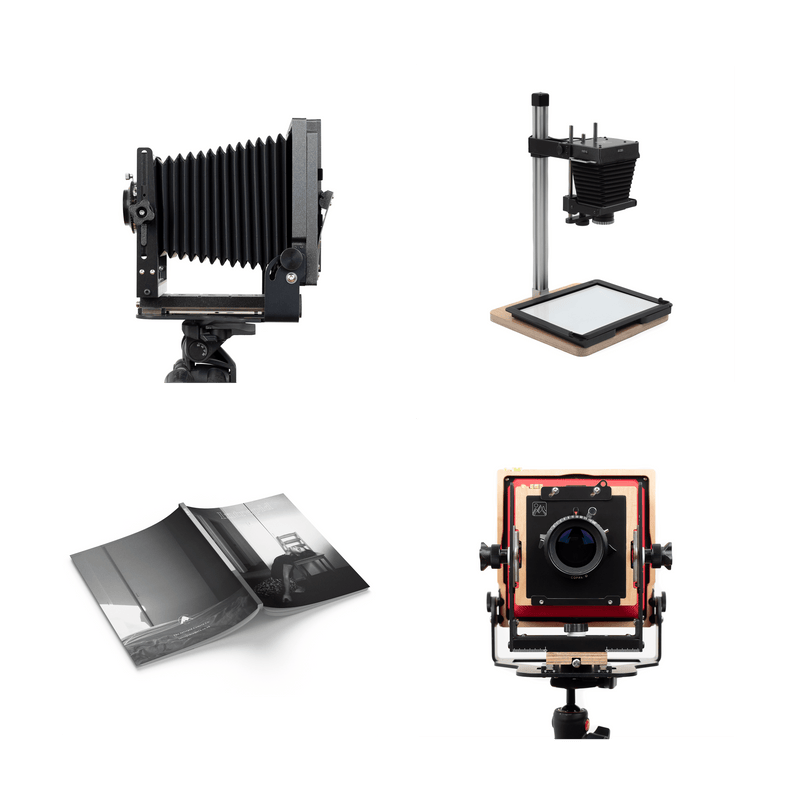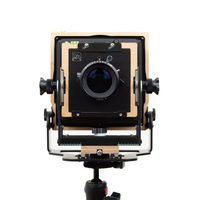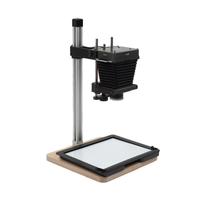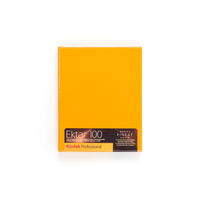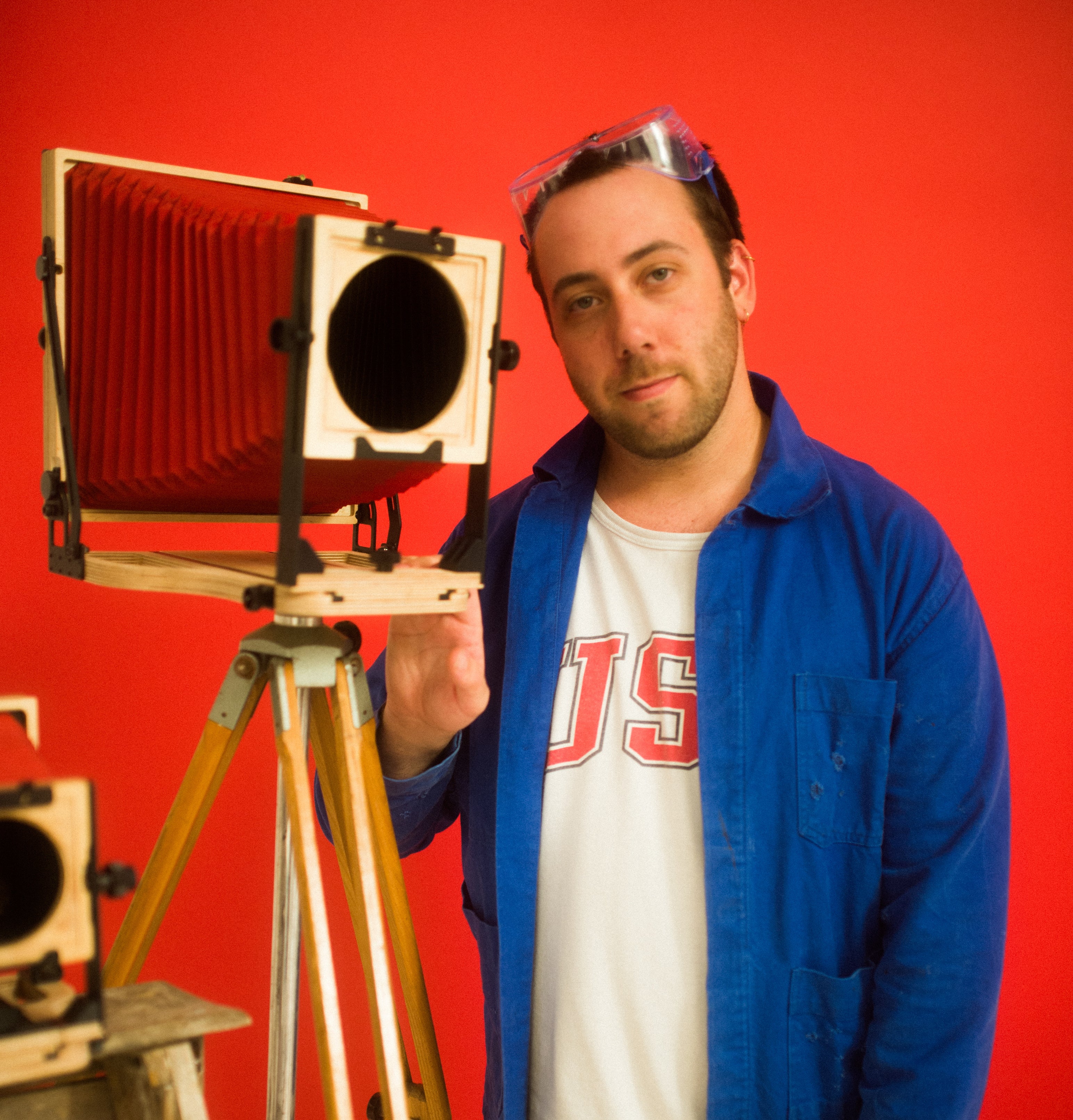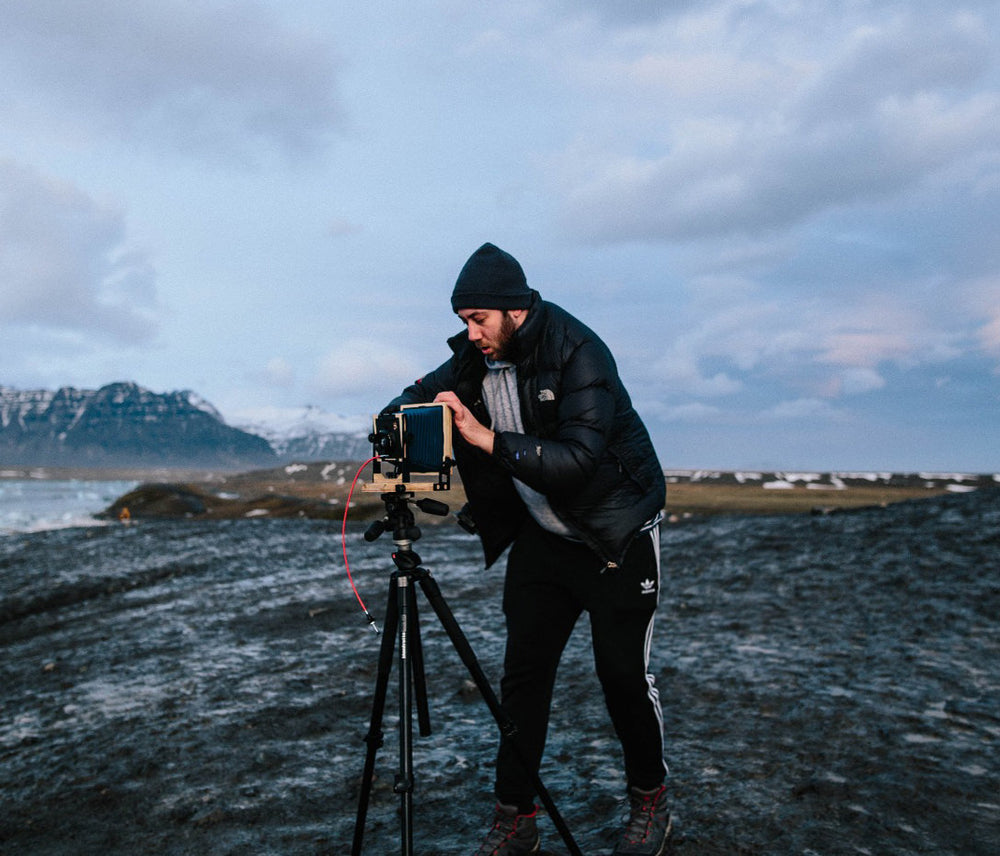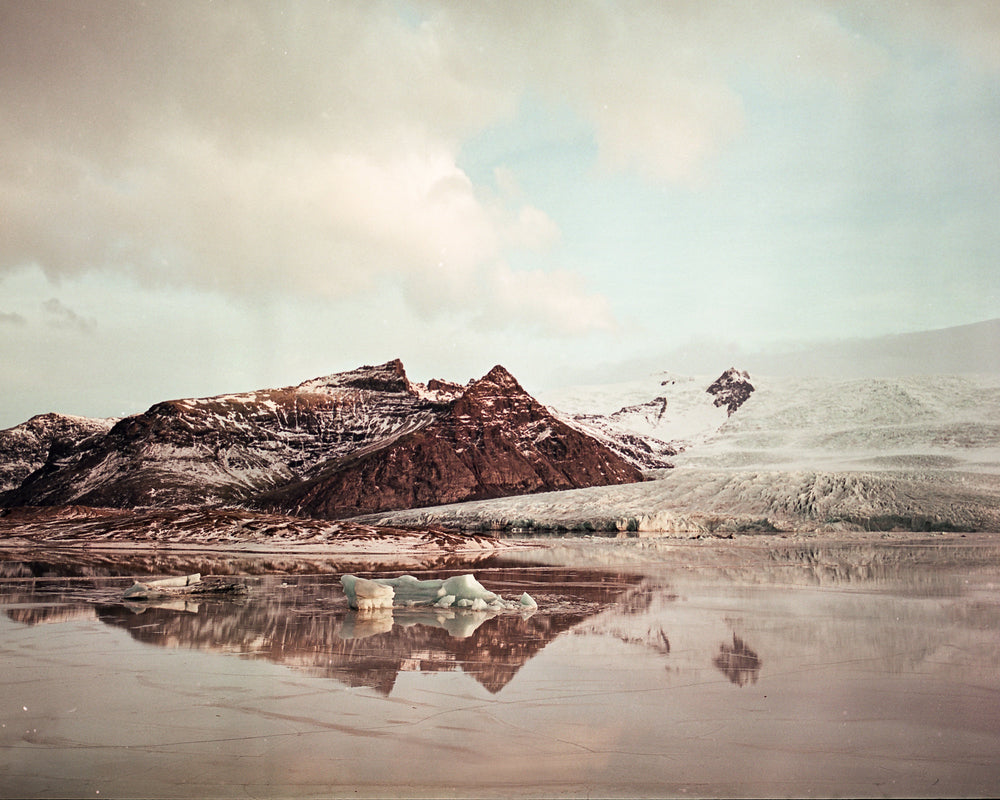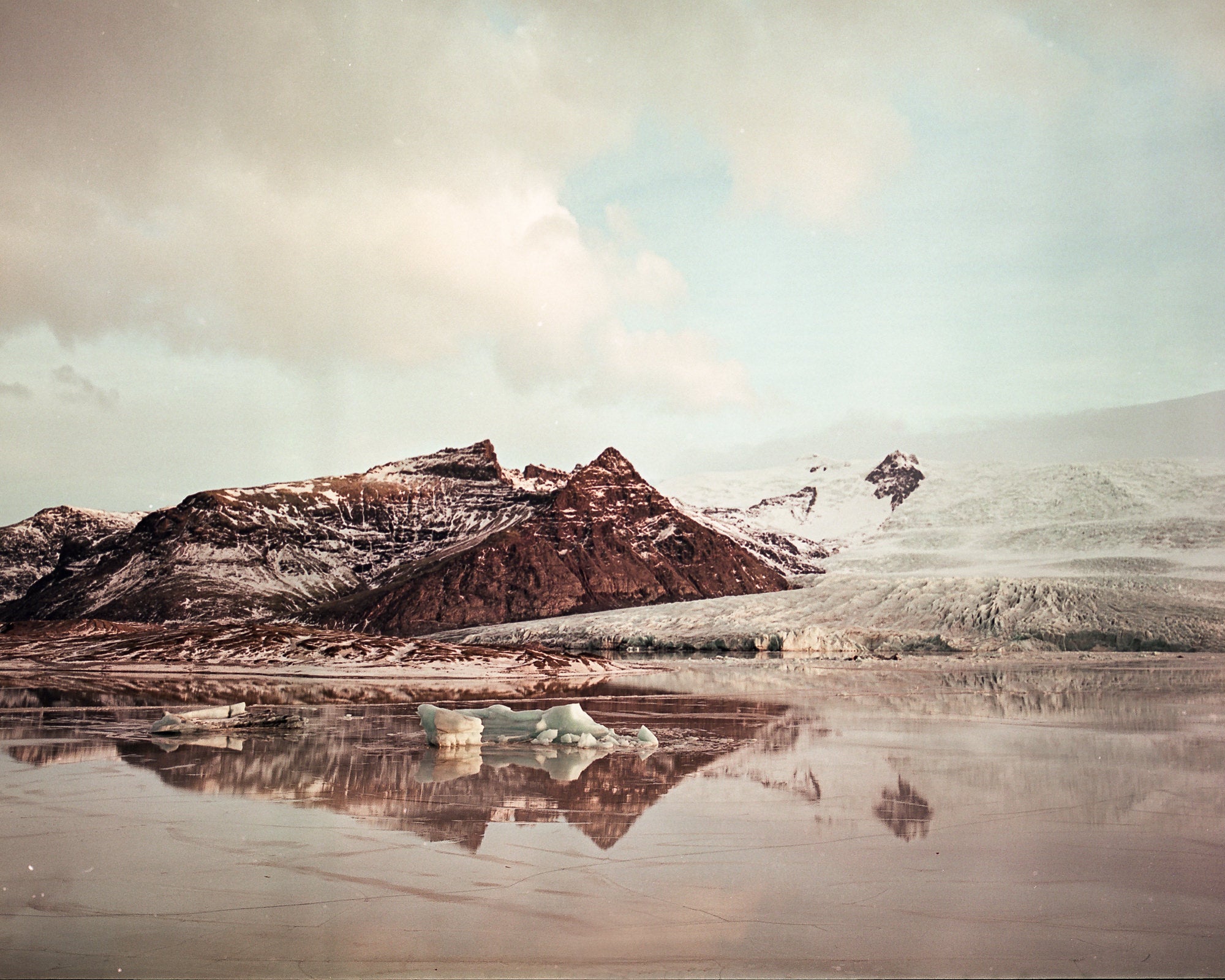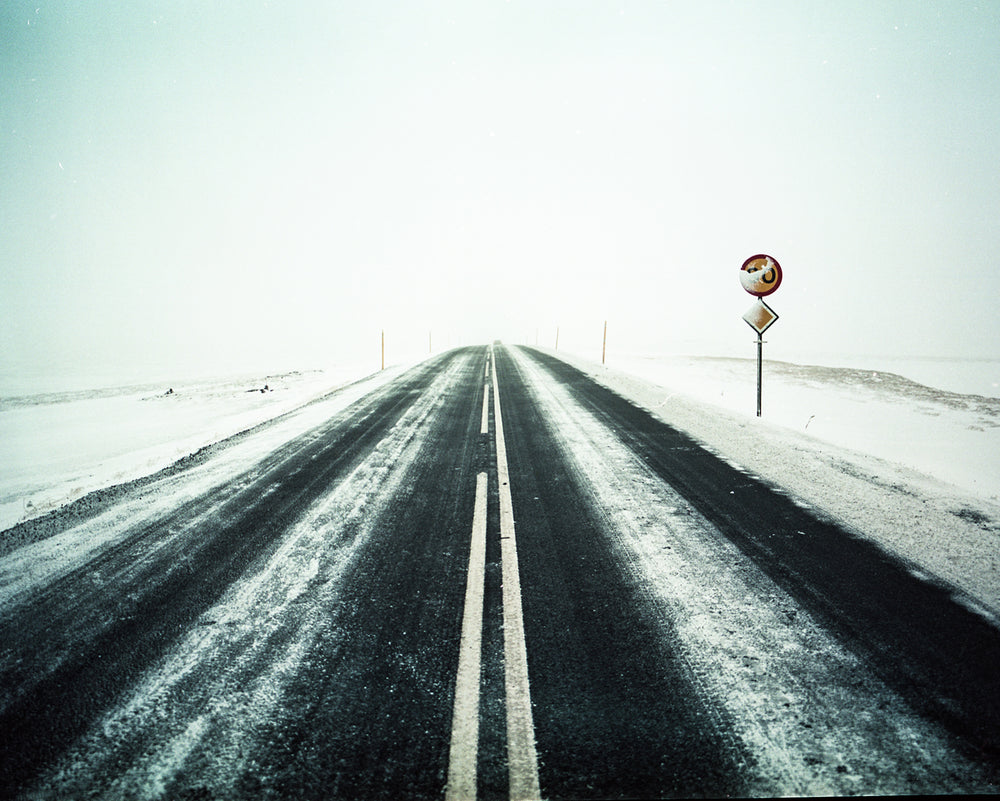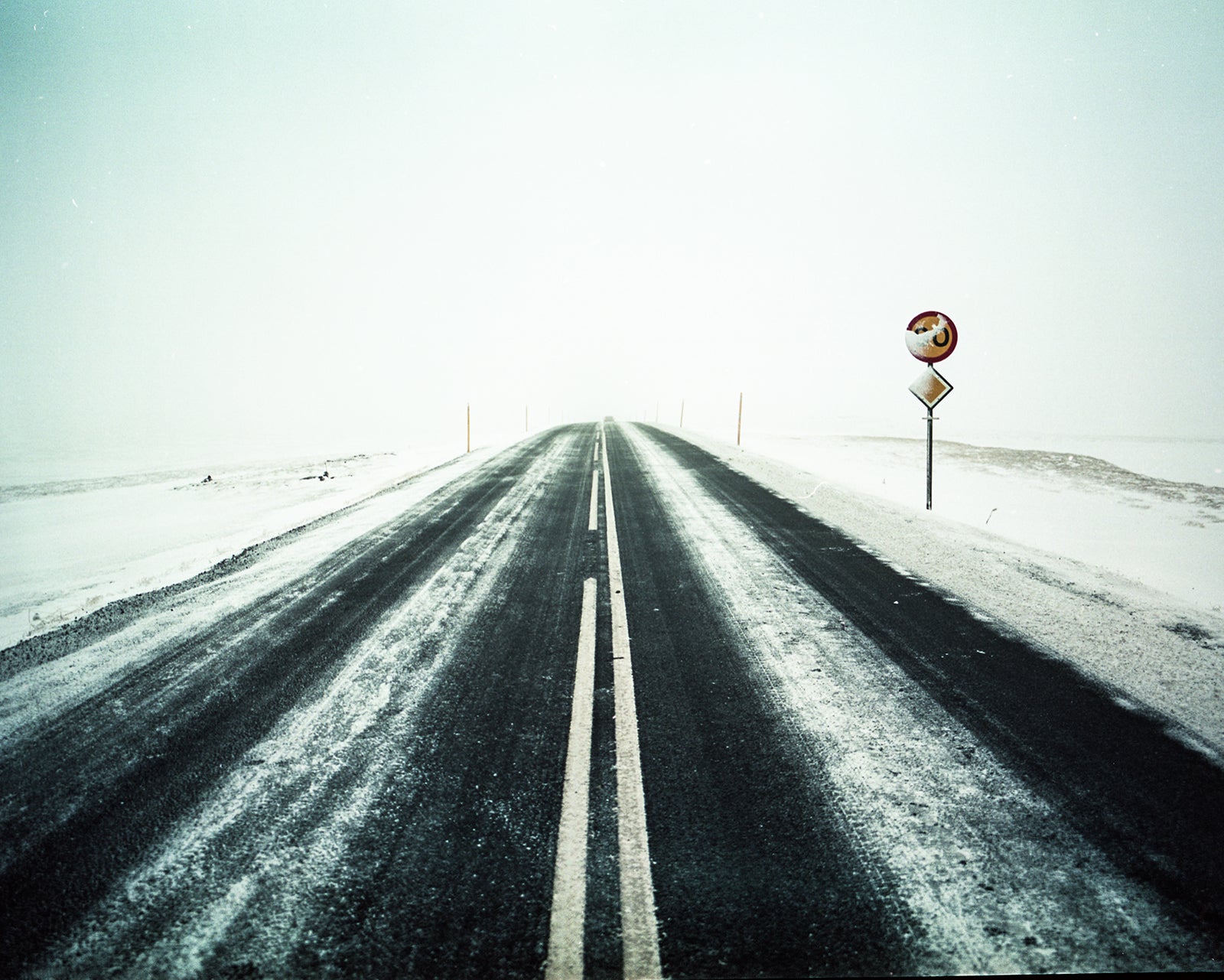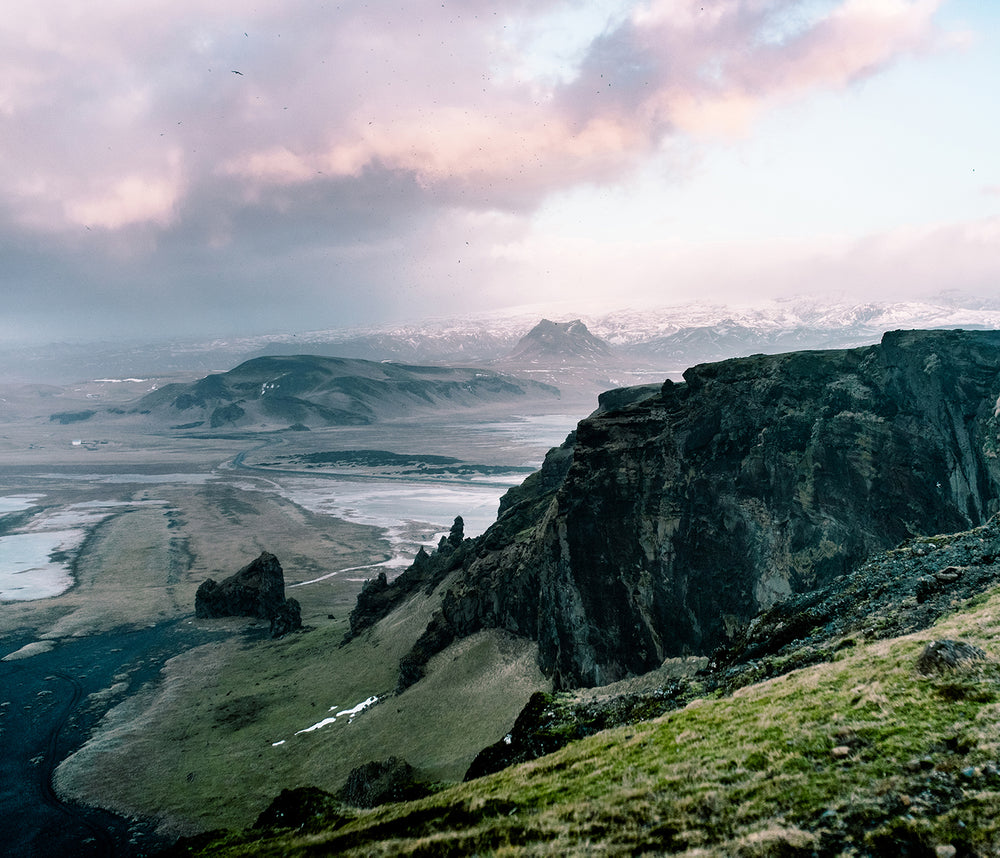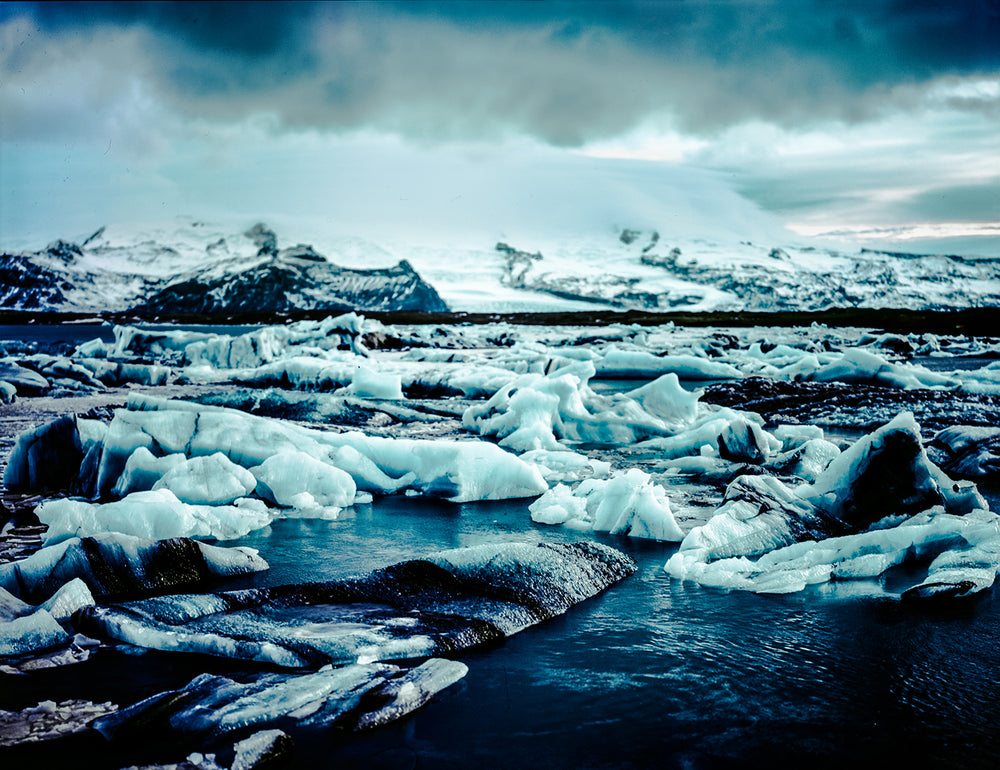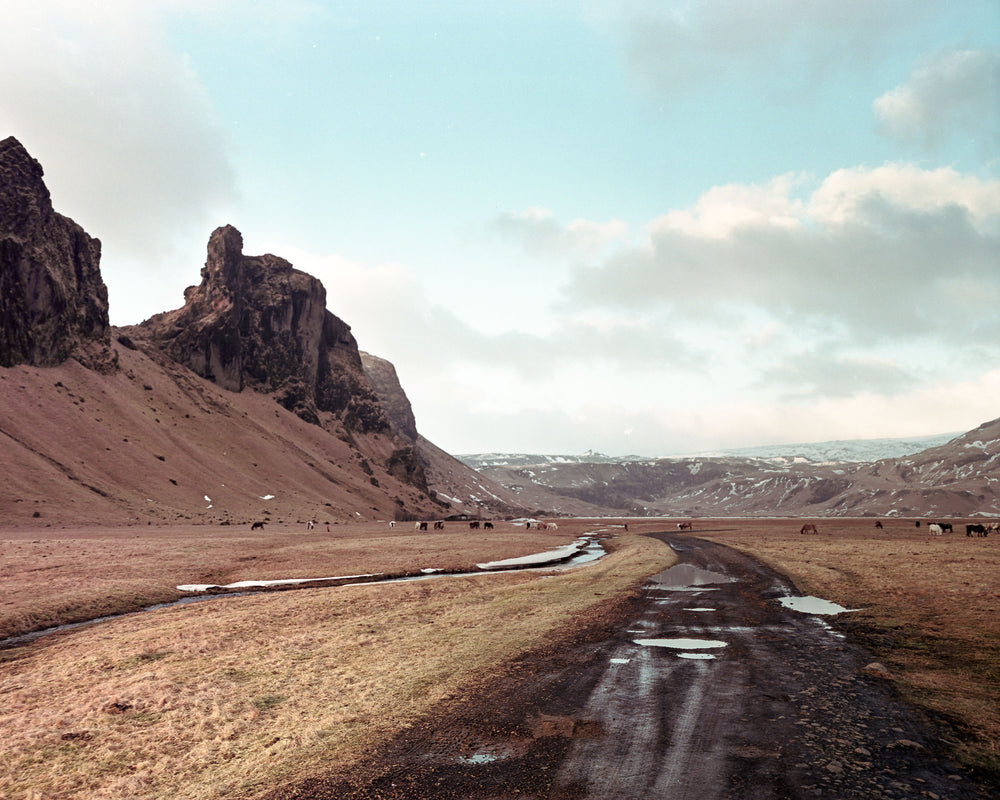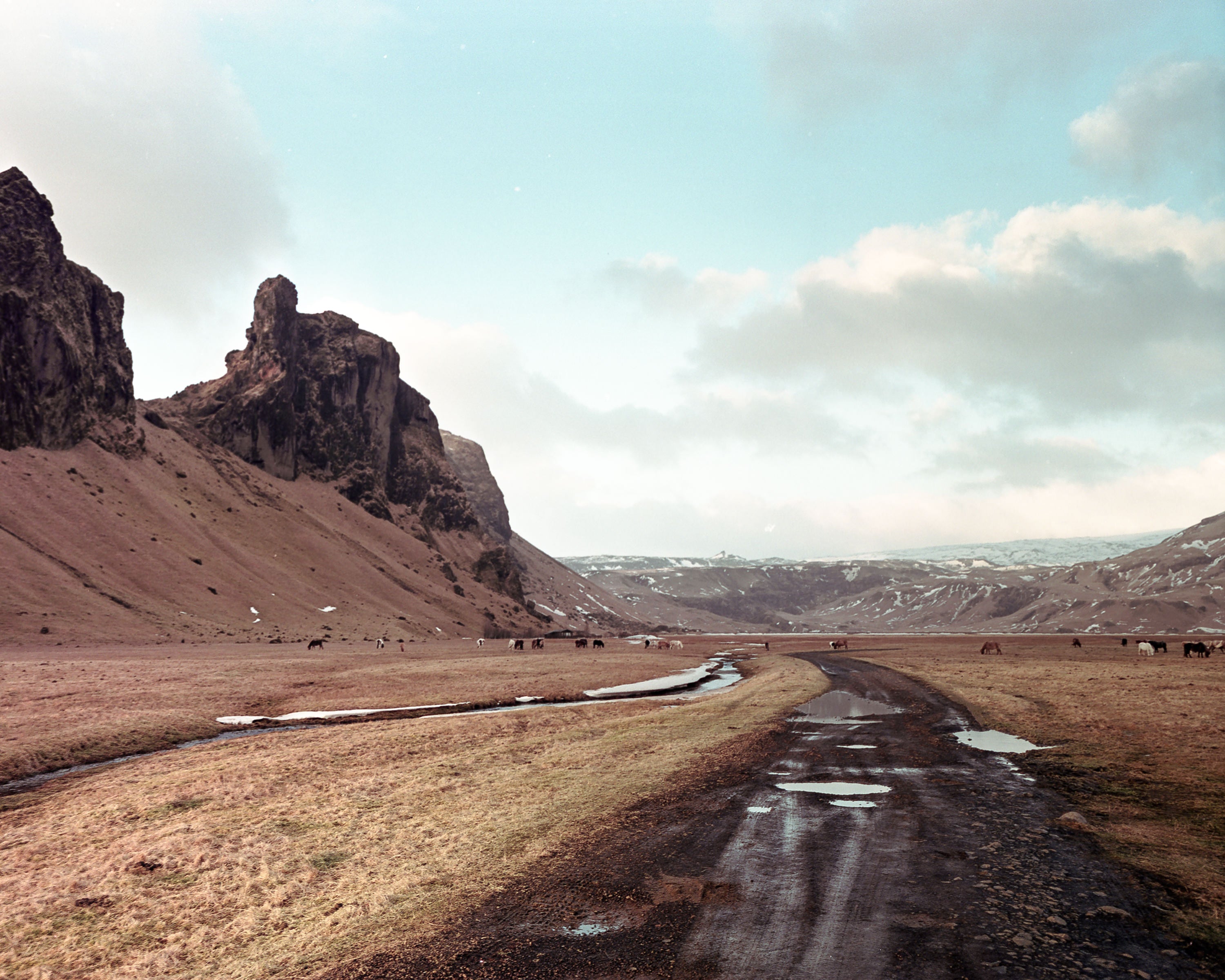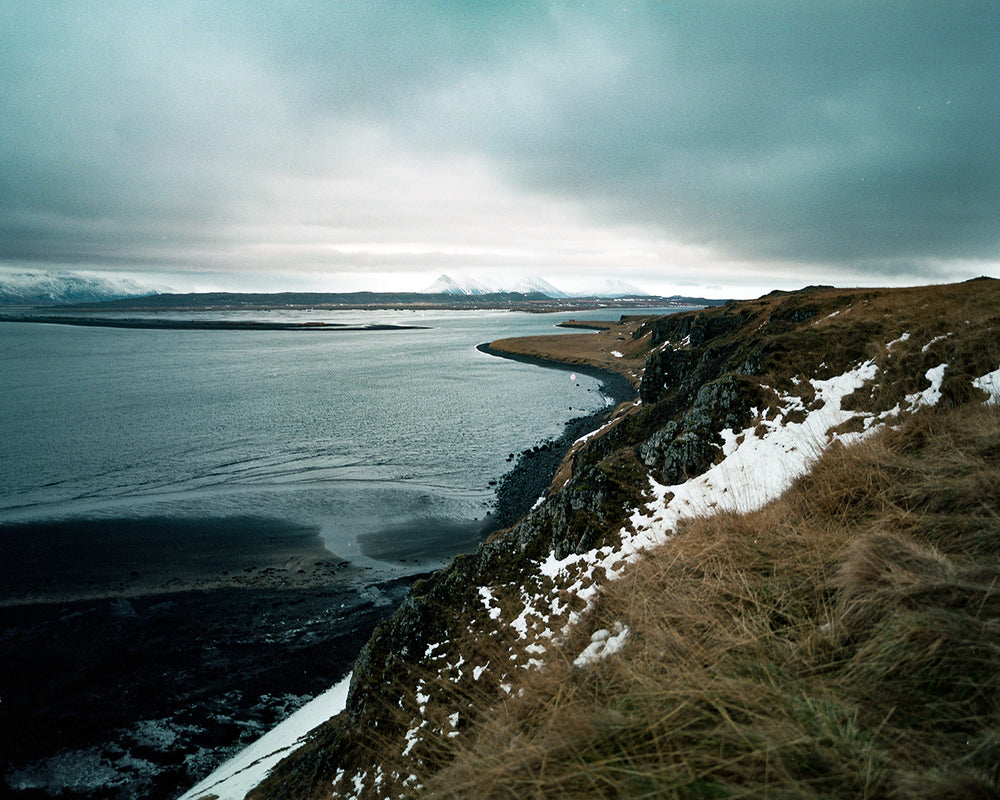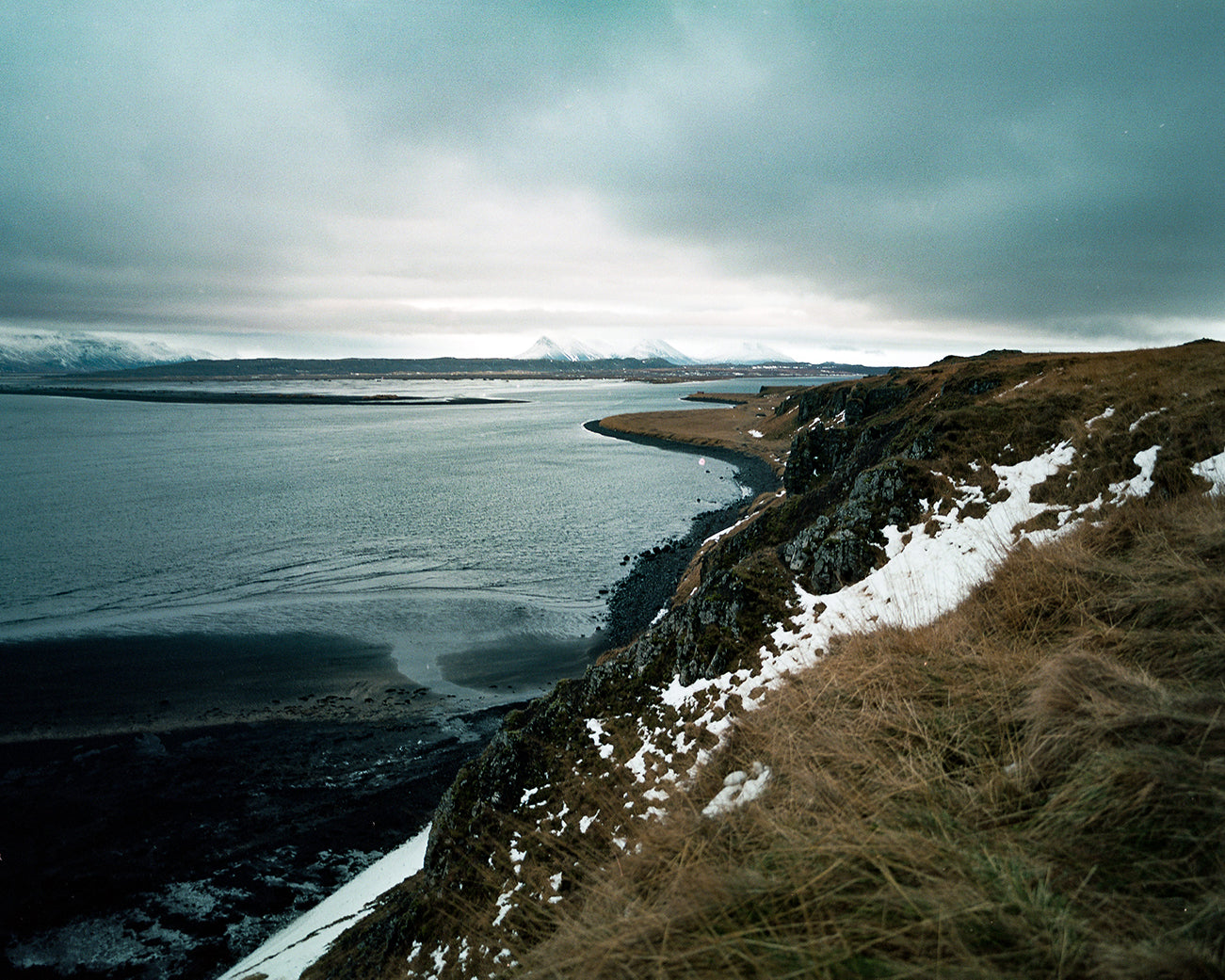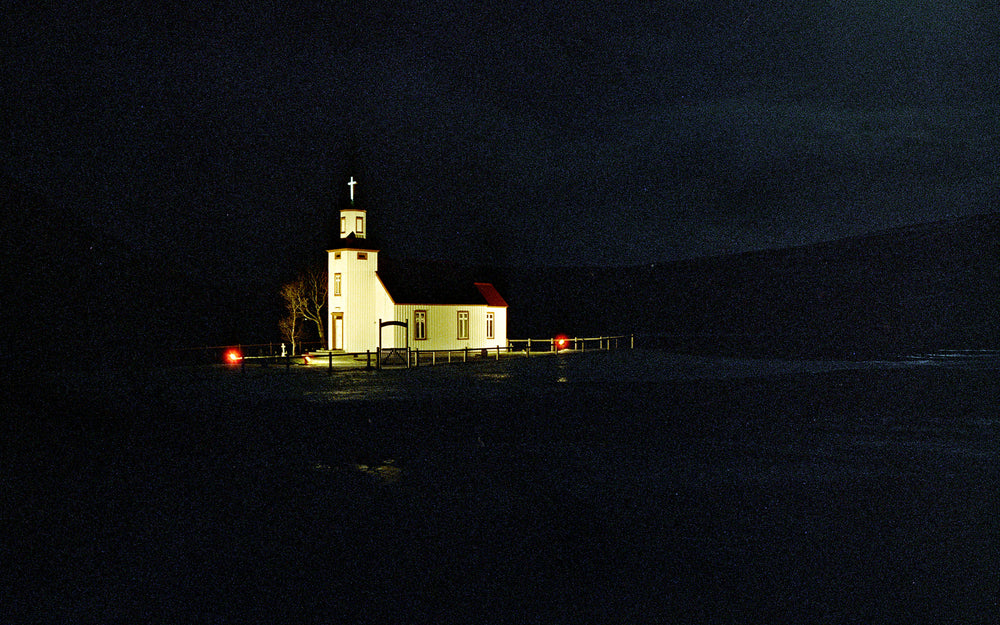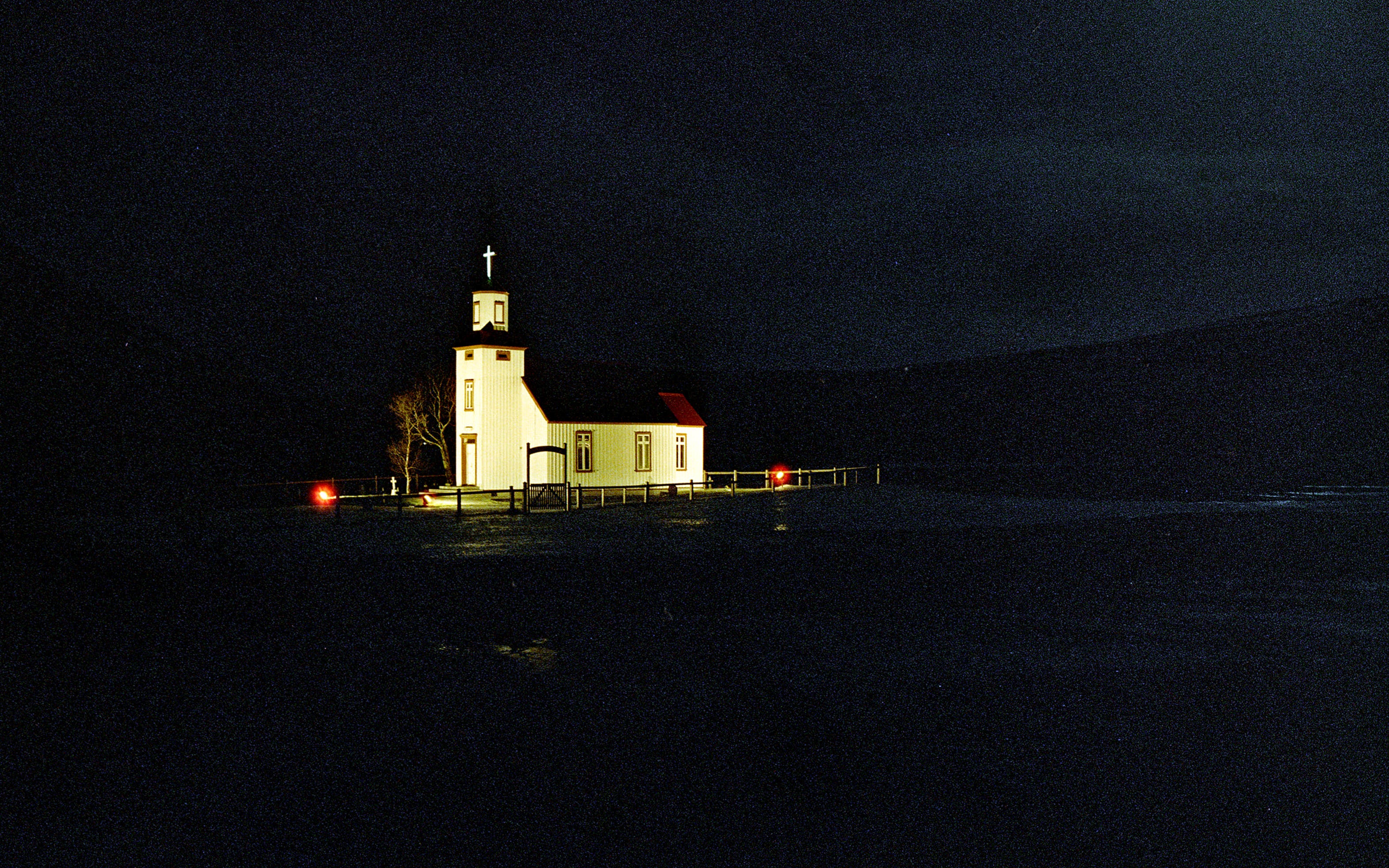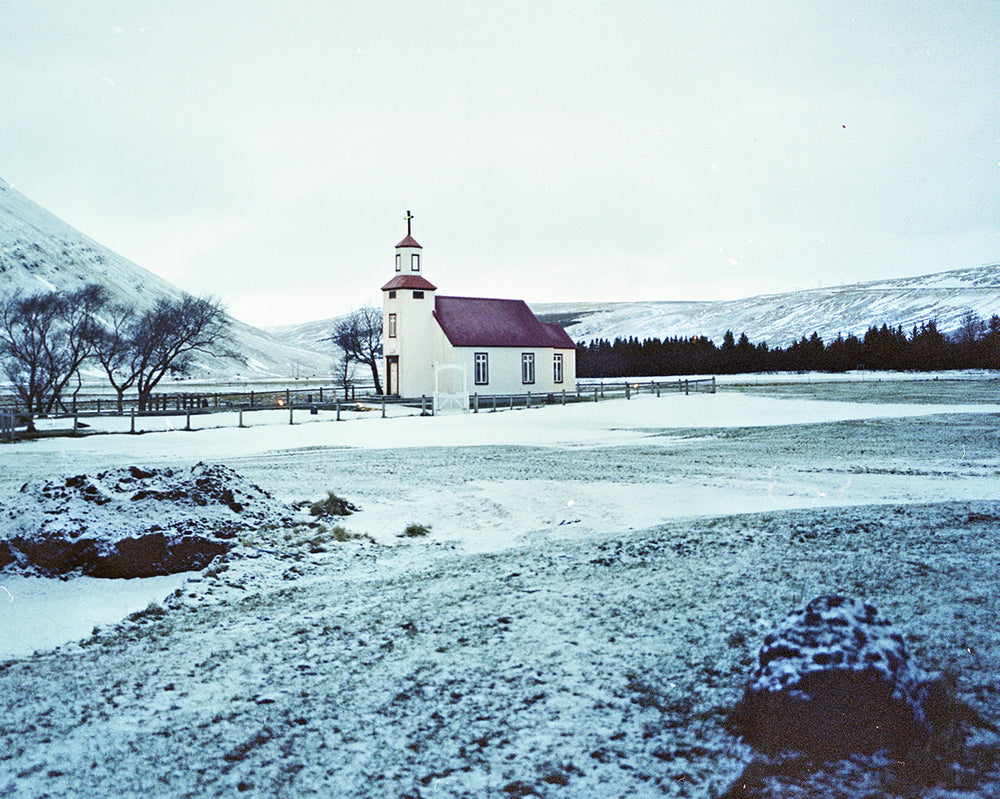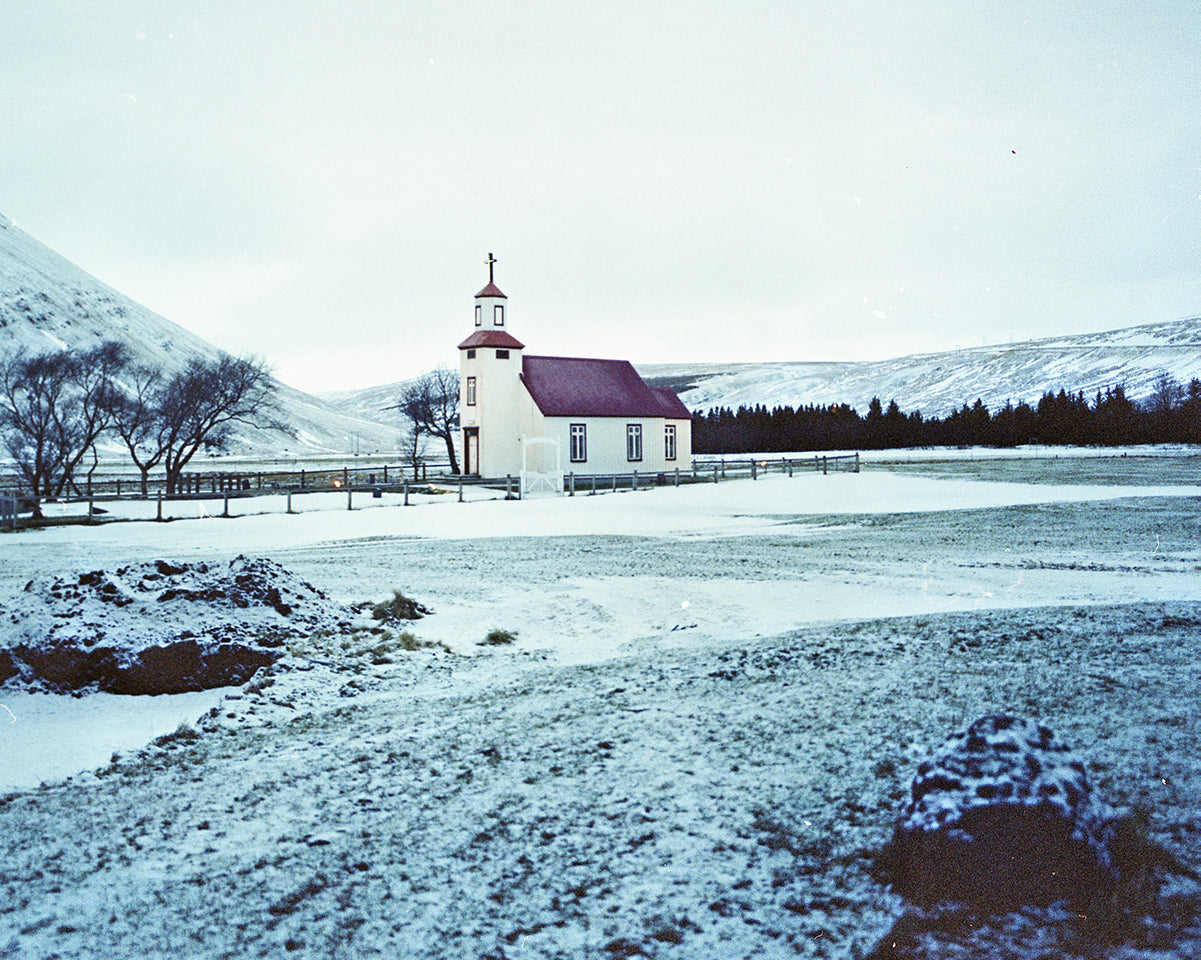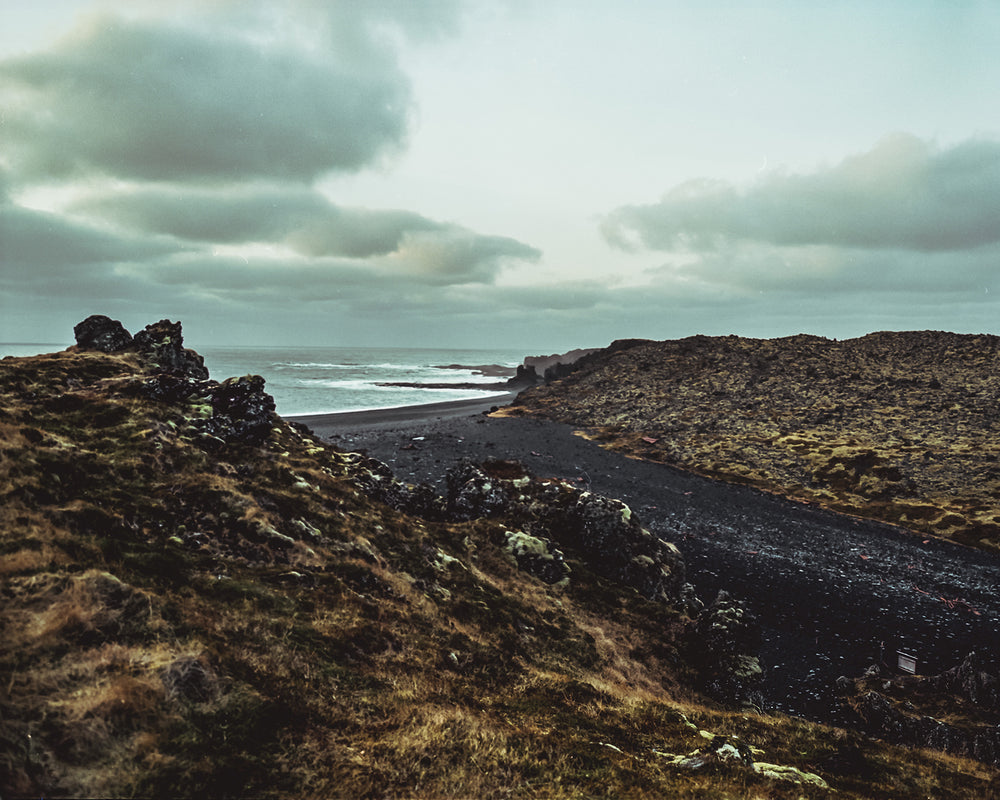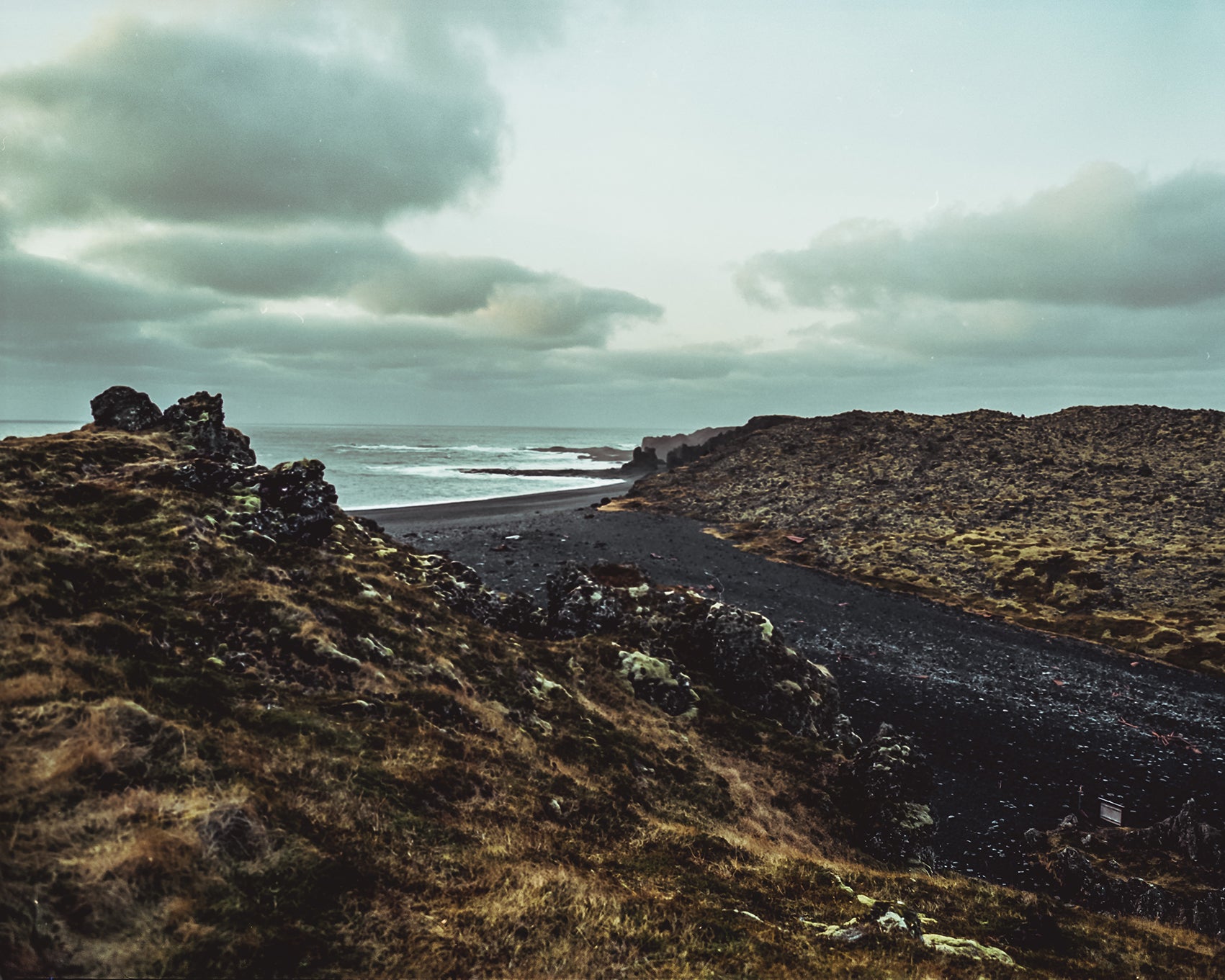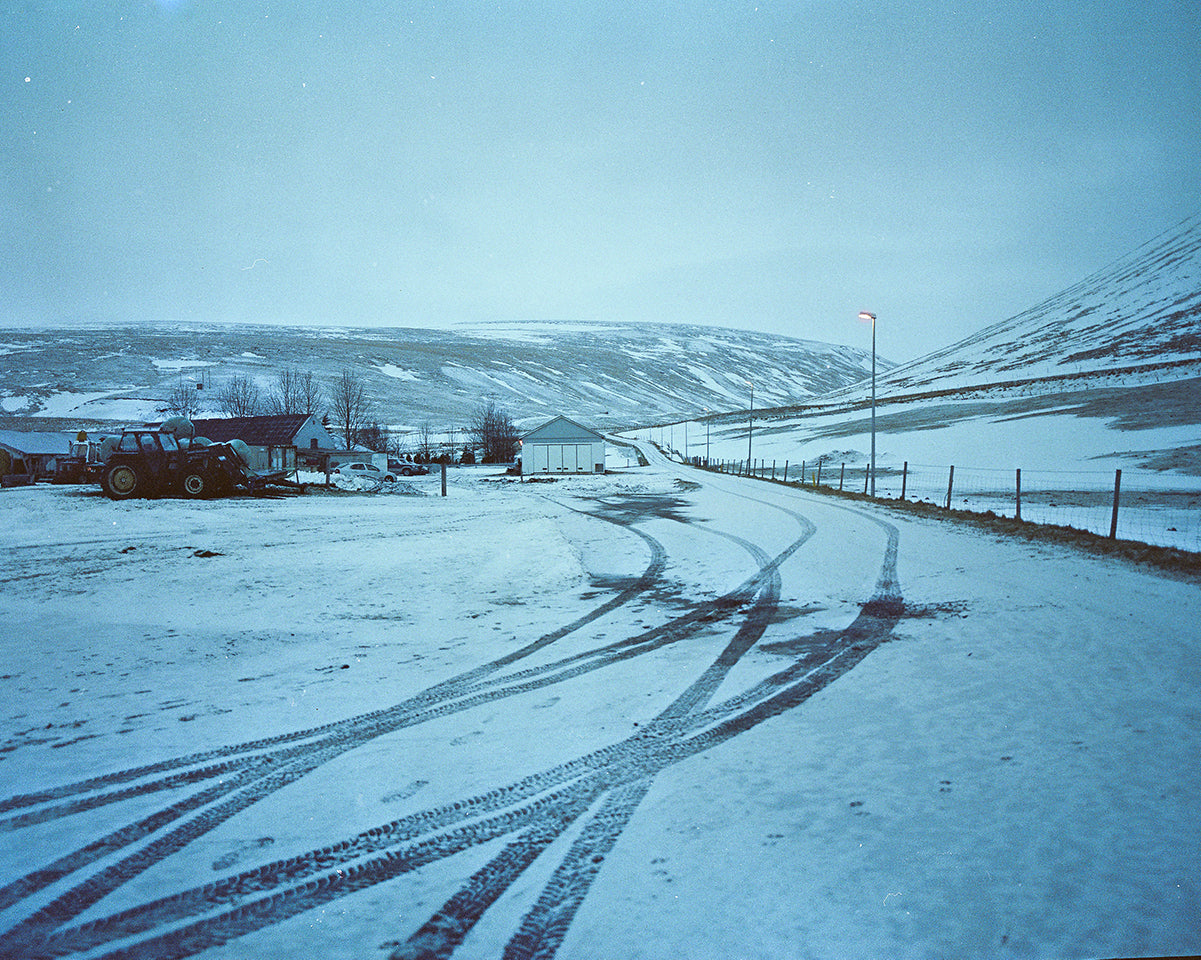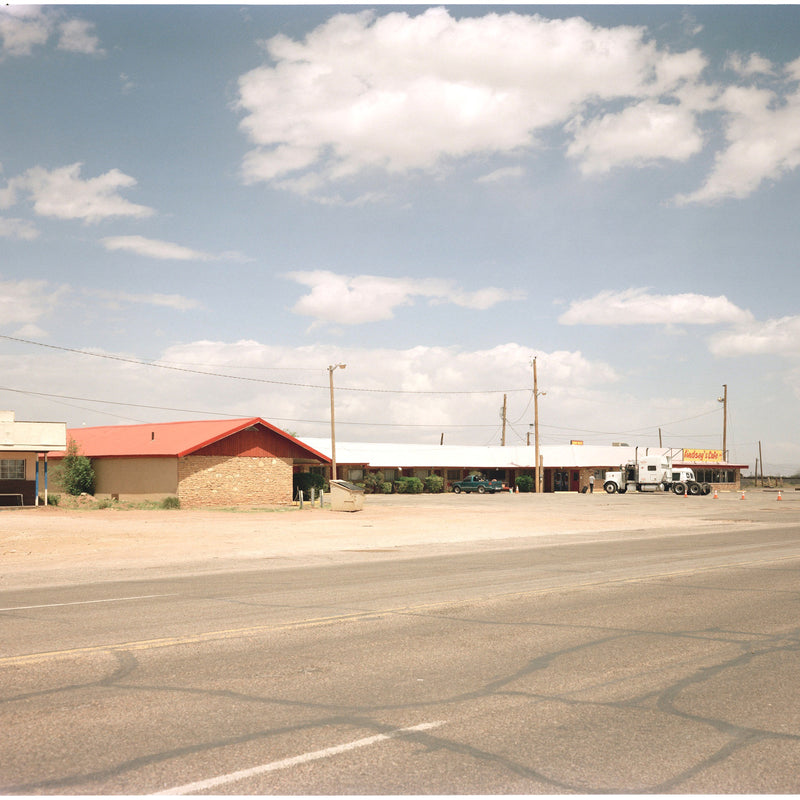Iceland With Daniel Alexander Harris
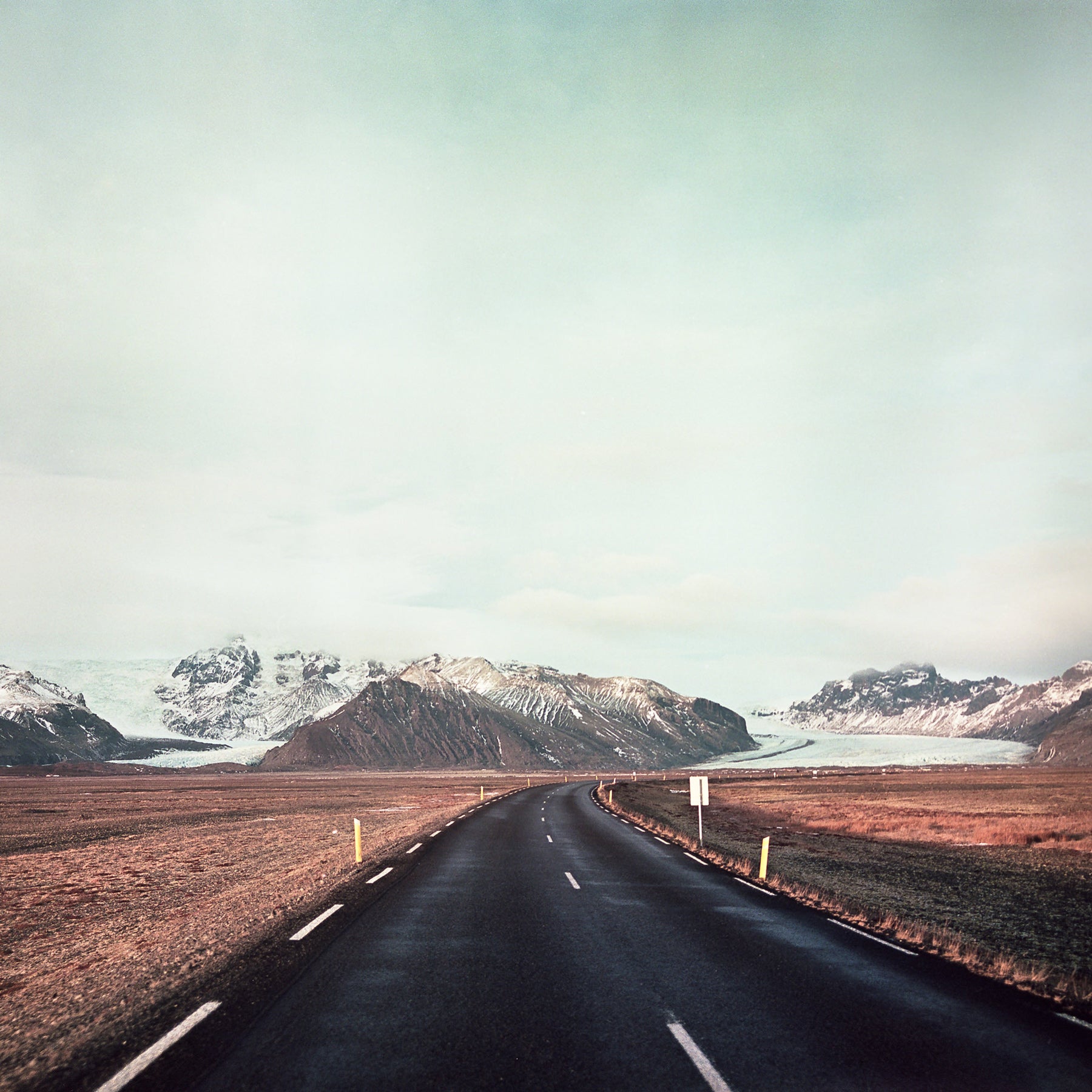
Daniel Alexander Harris challenged himself to try large format for the first time on a Winter trip to Iceland.
"For the majority of folks on here who don’t know my work, I am a Professional Portrait Photographer specialising in album covers and press shots for bands and solo artists. When I’m not working, I try to get out of the city and plot adventures with as many cameras as I’m willing to hustle up a mountain."
2017 was the year I shifted all of my professional work from digital back to film. I had lost a lot of love for photography as a result of my digital workflow and had lost that all-important emotional connection toward what I was shooting. At that low point, I challenged myself to learn everything I could about film, not only out of curiosity but also, to remove some of the financial burden that comes with it. I started home developing C41, E6, B&W film and scanning on my Pakon F135 and Epson V750 which allowed me to almost exclusively switch all my personal and professional work to film once more. It was completely liberating and I felt a big power shift go from editing to the point I pressed the shutter. I am now the happiest I have ever been with a camera in hand.
For a couple of years, I had dreamt of adventuring across Iceland. So when I finally pulled the trigger and bought my plane ticket to fly out last December, it was one of those decisions where it felt good to do, but logistically made little to no sense as a photography trip. We were going into the dead of winter when you commonly have 20 hours of complete darkness, this provided a beautifully challenging and unforgiving backdrop for my first baby steps into Large Format photography. Just like having 10 exposures to nail in a day, those four hours of sunlight felt like a challenge in itself and needless to say the cold was bitter and brutal. That said, I don’t regret my decision to go, what would Iceland be without ice after all?
On researching Large Format I was a little put-off, I think it can seem somewhat scary and overwhelming to photographers just looking into it. It can appear to be a really technical and overly analytical format with so many variables and moving parts to consider. But I have found that whilst it can be all those things, it can be as simple as you want it to be. In essence, you are dealing with a lens, some film and a camera box much like modular medium format cameras. So for those looking to get into it, don’t feel like you suddenly have to change your style of shooting. I maintain that it’s more important to care about what’s going on in front of the camera than necessarily getting too caught up in the process and potentially missing the shot. There’s no reason why you can’t shoot efficiently on LF.
As implied by my ‘Laissez Faire’ opening, if you’re the sort of person that gets offended by smartphone meter readings, perhaps turn away now. For the trip, I packed up my camera bag with my DJI Spark, the Intrepid 4x5 + Schneider 150mm 5.6, my Pentax 67 + 55mm F/4 + 105mm F/2.4 and Fuji Velvia 100, Fuji Provia 100 and Kodak Portra 400. My Pentax workhorse played up the whole trip due to the low temperatures and left me pining after my old mechanical Nikon FM.
"We were going into the dead of winter when you commonly have 20 hours of complete darkness, this provided a beautifully challenging and unforgiving backdrop for my first baby steps into Large Format."
Back to the adventure! We spent the first three days of the trip driving a gorgeous, gas-guzzling Land Rover Defender down the South coastal ring road doing our best to avoid the tourist hotspots. As a word of warning, driving the ring road will lead you to tourist hotspot after tourist hotspot. However, if you pick up a 4x4, you’re good to go onto the more challenging F roads that will lay your trip open for stunning, ‘original’ shot opportunities. There’s a reason it’s called going off the beaten track after all.
On day one we drove as far as Vík í Mýrdal, commonly known for the black beaches. We briefly stopped off at Skógafoss and Gluggafoss waterfalls which were both stunning but had conditions that would have left my LF camera needing first aid whilst totally battering my 6x7. If you’re heading out to Vík, you’ll need to be committed to get LF shots here with winds hitting 40mph regularly and erratic waves landing 20-30 metres higher up the beach. I really recommend leaving plenty of time to allow for the wind to die down.
On day two, we experienced some of the best sunlight yet. We set out to Dyrhólaey first thing, a small peninsula on Iceland’s South coast with this beautiful light-house a-top of a headland. If you couldn’t set up your LF at Vík, here you had no chance. (We weren’t doing well so far on the Large Format front.) I held onto my beanie hat for dear life and walked into the wind as if I was on the front row of a rugby scrum facing a much bigger opponent. We spent 45 minutes attempting to take shots whilst being battered by 60mph winds before we headed on towards Kirkjubæjarklaustur (an incredible Canyon). Given the lack of access by foot due to iced-over paths, we flew the drones into the valley. Even the walk from the 4x4 to a bridge 30 metres away was a sketchy, iced-over accident waiting to happen. Knowing that the Jökulsárlón Glacier Lagoon was up next, which borders Vatnajökull National Park, I fought my way back to the car earlier than my friends to load my five film holders with some Velvia 100.
The two-hour drive through Hof to Jökulsárlón was flecked with gale force winds and icy roads. We got there whilst the sun was still holding up and it looked beyond glorious, well worth the tense drive. The only frustration was just how many people were there, which made it a challenge to get a clear shot. I fought my way through the wind once more, this time with the Intrepid over my shoulder, to the highest point I could find. I held the tripod steady but the whole thing was quite rushed as the weather was changing rapidly. I got two frames quickly before we had to get back in the car as a sleet storm hit but I was pretty pleased with the images. It’s worth noting that I gravely dislike Velvia and have edited the colour tones away from the typical Velvia look - I’m not a purist when it comes to editing film and I tend to leave other stocks to their tone otherwise - I just really REALLY dislike Velvia but was saving my very limited stash of Portra.
Our drive back was perhaps the only time in 9 years I have ever thought I was going to run out of petrol. The weather, as per, was battering the car and our petrol hit the zero marker with 14 km to go to the nearest petrol station. We were driving into a headwind, slightly uphill in a gas-guzzling Land Rover Defender through a storm. Nothing was on our side and if you had the choice, this would be close to the bottom of the list of where you’d want to break down. Another 10 minutes went by and the petrol marker was visibly below zero…if that is even possible. We managed to freewheel into a petrol station that worryingly said it was closing in 8 minutes, filled up the monster with about £120 of fuel and drove the last hour back to Vík a little bruised from the whole experience. Note to anyone thinking of exploring Iceland - get a modern car with a petrol range indicator.
Having stayed in Vík for two nights, we packed up the Defender and headed back towards Reykjavík for our one-night stay in the city. We went a little off the main roads at this point avoiding all the landmarks we passed on day one. The landscape evolved hourly from something on the moon to something out of the Wild West. Look and feel wise, you really cover all bases in Iceland making it perfect for learning a new camera and quickly gaining experience. After a short drive back to Reykjavík, we set up shop for the night in Kex Hostel. We restocked our supplies at the local supermarket (highly recommended as a way of saving tonnes of money which could be spent on film) before heading on an 8-hour drive around the Western circuit of Iceland. We planned to end our day by positioning ourselves for the Northern Lights in the town of Blönduós in Northern Iceland.
The West Coast of Iceland was my standout highlight of the trip, it has everything that the South Coast has whilst being more or less deserted. You really feel you have the most wonderful place on earth to yourself, which is truly incredible. We had switched our car to a Toyota RAV4 which proved a lot more suited to the long haul 400 km-a-day drives and treacherous roads. After 3 hours of night-driving from 7am, we arrived at the beautiful and elegant Kirkjufell (or Church Mountain) for dawn at 10am. Whilst taking ‘the perfect’ shot of Kirkjufell, I managed to get sucked down into a swamp bog and emerged knee to shoe caked in mud, a lowlight of my trip…and the shot was so singular angle-wise that I haven’t even included it in here. I found the much more secluded western black beaches far more stunning with their isolated lighthouses and gorgeous little coastal villages. I highly recommend the West loop for anyone on a short two-day trip to Iceland.
After a day of driving the Western loop, we headed on an altruistic journey into the ever-colder Northern region of Iceland. When we had plotted our trip, we knew that we needed to get away from the cities to have a chance at the Northern Lights. We valiantly drove 4 hours north to no avail but stayed at the most beautifully secluded guest house by a neon-lit church that wouldn’t be amiss in a music video by The Weeknd. I did my first ever LF night exposures fearing the reciprocity of failures ahead that I hadn’t accounted for. I managed to get an image from my 10-second F/22 exposure that I liked and matched it the following morning from the marker point I’d left. A little bit deflated by our far-flung failed gamble to see ‘the lights’, we journeyed back to the Keflavík Airport on a 4-hour drive to drop off our car and for our final night in Iceland before an early departure the next day.
Iceland absolutely stole my heart. It is one of the most diverse places to practice and grow as a landscape photographer whilst also providing comfort to step out of the adventure when needed. Given the weather conditions, and the distance we drove in 5 days, those comforts are fairly necessary. As my first Large Format Intrepid experience, I quickly became very comfortable finding my way around the camera and was really pleased with how bright the ground glass was. Everything felt like it worked as it should and I could get to grips with all the movements available without getting too lost. As someone who had rather rapidly prepped for the trip, I unfortunately, didn’t have a loupe making that critical focus a little hard to come by but I don’t feel like any of the images are too far off. For those just starting out, or those a little sluggish on their metering like me, I really recommend saving up a bit more to buy colour negative film such as Kodak Portra 400 to establish that extra safety net with your initial LF work. It provides those extra stops of dynamic range that will mean you can guarantee your results.
